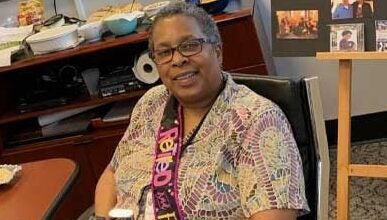Group archiving racially motivated murders
Published 10:19 am Tuesday, May 30, 2017
On September 17, 1935, a murder took place in Oxford that has been largely unacknowledged in the decades since.
Kyleen Burke, a law student with the Civil Rights and Restorative Justice Project at Northeastern University, discussed this case at the William Winter Institute on the Ole Miss campus.
The Civil Rights and Restorative Justice Project was started in 2007 by attorney Margaret Burnham who lived in Batesville during the 1960s. They seek to build a public archive compiling the stories of racially motivated murders from the 1920s through the ‘60s.
“We’re assigned a newspaper article where it looks like an event occurred that the history is not available or it looks like someone was killed out of racial hatred, but the story is not yet publicly accessible,” Burke explained at the beginning of her talk. “It’s the student’s job to find whatever resources you can and put them in one place to make the story available to the community, to living family members and to anyone you can find.”
Burke’s case deals with the murder of Elwood Higginbottom, a black sharecropper who was lynched in 1935. Her extensive research started with a single article and one from Batesville.
Through the years, Higginbottom’s name has been spelled in various records differently, and Burke notes that the facts of the case have also come up differently depending on the publication, including in the Oxford EAGLE.
“The papers that I’ve been looking at, all came from someone telling the story with their own prejudices, motivations or values,” Burke said. “I’ve only been able to access the very surface, but there’s a lot more.”
Higginbottom was born in 1910 and resided in the Woodson Ridge area of Oxford. He lived with his wife and three children. He was involved with union organizing for sharecroppers at the time and the summer before his murder, there was a rash of killings of black men involved in these organizations.
May 21, 1935, is when the local papers start reporting various accounts of the events that led up to Higginbottom’s murder.
Altercation led to death
The EAGLE and Clarion Ledger report that Higginbottom and a nearby neighbor of his, Glen Roberts, got into a disagreement, leading to the death of the latter.
“What the black newspapers at the time and what further investigations that happened afterward reveal is that the situation was quite different,” Burke explained. “It looked like what was happening was that Roberts wanted to cut a shortcut across the land that Higginbottom was cultivating and Higginbottom was not putting up with it. That, and it seemed like there might have been some ongoing conflict there.”
According to the accounts, Burke is referring to, Roberts gathered 25 men and came to Higginbottom’s home that evening. It is believed that Higginbottom shot Roberts in self-defense once Roberts entered his house. Higginbottom went on the run but was found two days later hiding in a Pontotoc swamp.
The attorney for the defense, Bramlett Roberts, extracted an admission of guilt from Higginbottom, but the sharecropper had received minimal schooling and education. The admission read that, “(He) fully intended on killing him because (he) was mad at him.” This was the account that would be given out to local papers. Higginbottom would later plead “not guilty” during his court case. Higginbottom testified on his own behalf along with two witnesses: the sheriff and his wife.
Mob takes over
Higginbottom’s case began on September 17, 1935. The judge presiding over the case, Taylor McElroy, explained to the jury the legal definition of self-defense and told them that if they viewed Higginbottom’s actions to fit this definition, then they should find him not guilty. By 8 p.m. that night, the jury decided that they needed more time to reach a verdict.
As rumors started to circulate in Oxford that a not guilty verdict might be reached, a mob started to form around the Lafayette County Courthouse. The mob reportedly turned off the power to the building and took Higginbottom from his cell, put him in a car and drove two-and-a-half miles north. Higginbottom was shot and hung; he was 28 at the time of his death.
The next day, he was buried and the jury was dismissed. Burke’s research found a statement in court records which read: “On the recommendation of the district attorney, this case is nol-prossed (do not prosecute), it appearing to the court that the defendant is dead.”
The governor of Mississippi at the time, Martin Sennet Conner, allegedly wrote a letter saying that if he had known about Higginbottom’s case he would not have let it happen. The NAACP wrote a letter to President Franklin D. Roosevelt about the lynching; the organization was simultaneously trying to pass a bill through Congress that would make lynchings illegal. That bill never passed.
One eyewitness to the murder was Jimmy Faulkner, William Faulkner’s nephew. It is believed that Higginbottom became the basis for characters in the Nobel Prize winner’s stories “Intruder In The Dust” and “Pantaloon In Black.”
No accountability
Burke says that Higginbottom’s story is an important one for Oxford to confront, because “the history of the community has been allowed to proceed uninterrupted.”
“The local leaders who played an active role in murdering a young black father did not face accountability and were successful in their attempt to suppress the story from public knowledge,” she added. “We are only two generations removed from Elwood Higginbottom. His children were forced to flee Oxford. He is a recent ancestor of the entire community and his story will continue to echo until is it acknowledged and reconciled with.”
On her recent trip to Oxford, Burke found new research on the case. She plans to continue studying Higginbottom’s story further.
“I drafted a 25-page report that I will be editing to include the new information,” she said. “I also look forward to future conversations with the Winter Institute and community members about how I can support their efforts to address the story.”





